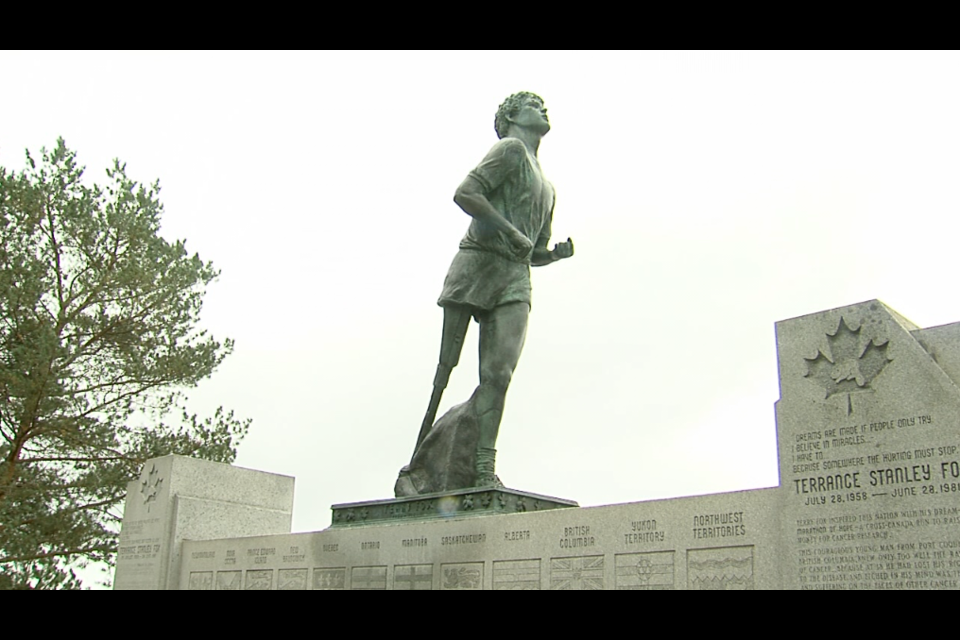THUNDER BAY —Bill Vigars supported Terry Fox during his Marathon of Hope cross-Canada run in 1980.
Forty-two years later, the White Rock, BC man continues to honour the young man who was forced to quit his run outside Thunder Bay because of a recurrence of cancer.
Vigars was in Thunder Bay on Friday to visit the Terry Fox Monument on Highway 11/17.
"This is a journey down memory lane," he said. "It's been 42 years since the run, but to me many of the memories are like they happened yesterday."
Vigars first met Fox on June 9, 1980 as he was passing through Edmundston, New Brunswick.
He was working with the Canadian Cancer Society, helping to promote the run and encouraging communities to hold welcoming events along the way.
Vigars attended the unveiling of the Terry Fox Monument, and has driven from Edmundston along Terry's route as far as Sault Ste. Marie.
But until now he has never driven the stretch around Lake Superior.
"So many dramatic moments happened on the north shore. Revisiting them has been a dream of mine," he said.
"I promised Terry that I'd keep him alive forever, and I love telling stories about Terry, and what it was like. For me, this is a very personal journey and I'm so happy to be in Thunder Bay again."
Vigars recalled the significance of a stop Fox made just east of Terrace Bay.
"Terry said it was his most inspirational day. And I was able to stand on the shore of Jackfish Lake, 42 years later. If you've ever seen the video, and the scenes from that, in my head yesterday I could still hear the laughter. That one particular day was one of the lightest and most comfortable and rewarding days...and Terry being able to relax and have fun."
To this day, he said, he continues to hear people recounting their own encounters with Fox, and why it was important to them.
"In Terrace Bay and the other small towns we stopped at, it seemed everybody in town had a Terry Fox story, a Terry Fox memory, whether it was seeing him run past or having an opportunity to talk with him."
Vigars remembers that Fox related particularly well with children, and believes that was connected to his own experience as a cancer patient in hospital at the age of 18.
He's pleased that the education system has helped to keep Fox's legacy alive as an example of selflessness and determination, but most importantly to illustrate how "you can have a dream, but it's a lot of work."
One of the things many people don't realize about Fox, he said, is that he put so much effort into preparing for the marathon.
"Terry ran over 3,000 miles before he started his run, just practising. He didn't just get up one day and say 'I'm gonna run across Canada.' He worked his butt off. And then when he did it, he worked his butt off."
Vigars recalled how Fox would point out that he could quit the run anytime he wanted, but kids in the hospital can't quit.
When Vigars asked him how he was able to keep up such a torrid pace, day after day, Fox replied that he did it one telephone pole at a time.
"He said 'I can run to that pole, I can run to the next pole, and the pole after that. I can't run a marathon a day, but I can do it one pole at a time.'"
